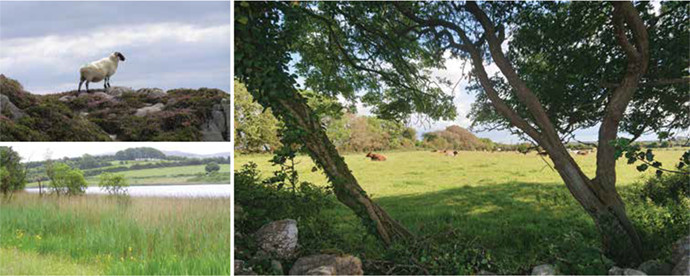Farming for Nature is an initiative, supported by the National Parks & Wildlife Service and the Department of Agriculture, Food & the Marine along with other partners, which aims to support High Nature Value farming in Ireland. It was established in 2018 to support the enthusiasm of many farmers to look after their heritage by means of providing advice and encouragement. The initiative has two main aspects – telling stories of farmers across Ireland who are making a positive difference to nature on their farms and in their communities (including an annual national award) and sharing information (including a resource to let interested parties view what has been done elsewhere or to discuss directly with those who have previous experience of introducing, enhancing or safeguarding habitats). The basic premise of the initiative is to show that farming must be a part of nature and not apart from it and that farming for nature can also be agriculturally, economically and socially progressive.
It is intended to use the FFN website and other media to promote and share some of the exciting emerging initiatives and technical innovations taking place in Ireland today.
Farming for Nature: The Role of Results-Based Payments
This book, recently published by NPWS and Teagasc, collates several Irish experiences of developing and applying results-based approaches for the conservation of farmland biodiversity. It presents the findings of and lessons learnt from a collection of innovative case-studies of the best Irish locally led result-based agri-environment schemes to date. The core of the book and its major contribution is the collection of case studies, which situate the farming systems and the local environmental assets, their level of priority and the threats they face. They provide sufficient detail to help others see how the general principles of a Locally Led Results-based Approach (LLRBA) were implemented in the case study areas: for example, by providing actual farm plans and scoring sheets, as well as detailing governance mechanisms, the role of advisory services, the choice of indicators, monitoring details and the relationship between results and payment. The book is intended for an international audience of agri-environmental practitioners; however, it is not a handbook or instruction manual. For example, it could be used by an NGO to support evidence for the feasibility of a locally led result-based approach; read by a policymaker to demonstrate examples and case studies; and used as a working example to assist a practitioner in their own efforts to design a new LLRBA.
Download the book in PDF format
A synopsis including chapter-by-chapter downloads is also available.

